PROTECT YOUR DNA WITH QUANTUM TECHNOLOGY
Orgo-Life the new way to the future Advertising by AdpathwayTo avoid a cookie-cutter foundation, hedge, or border, let’s look outside the box for interesting alternatives to standard landscape shrubs. Those with dynamic foliage, flowers, and form enliven the arrangement. With multi-season appeal, they ensure something interesting is always happening in the landscape.
Unusual shrubs serve as focal, stand-alone specimens or spice up a mixed hedge. Among other ornamentals, calling on natives and their cultivars brings the added benefit of adaptability to site conditions without the need for extra resources. They also support pollinators and wildlife while bringing extra color and texture.
If you want something a little more unique in your garden, try one of these interesting and unusual shrubs.
Summersweet Clethra ‘Ruby Spice’
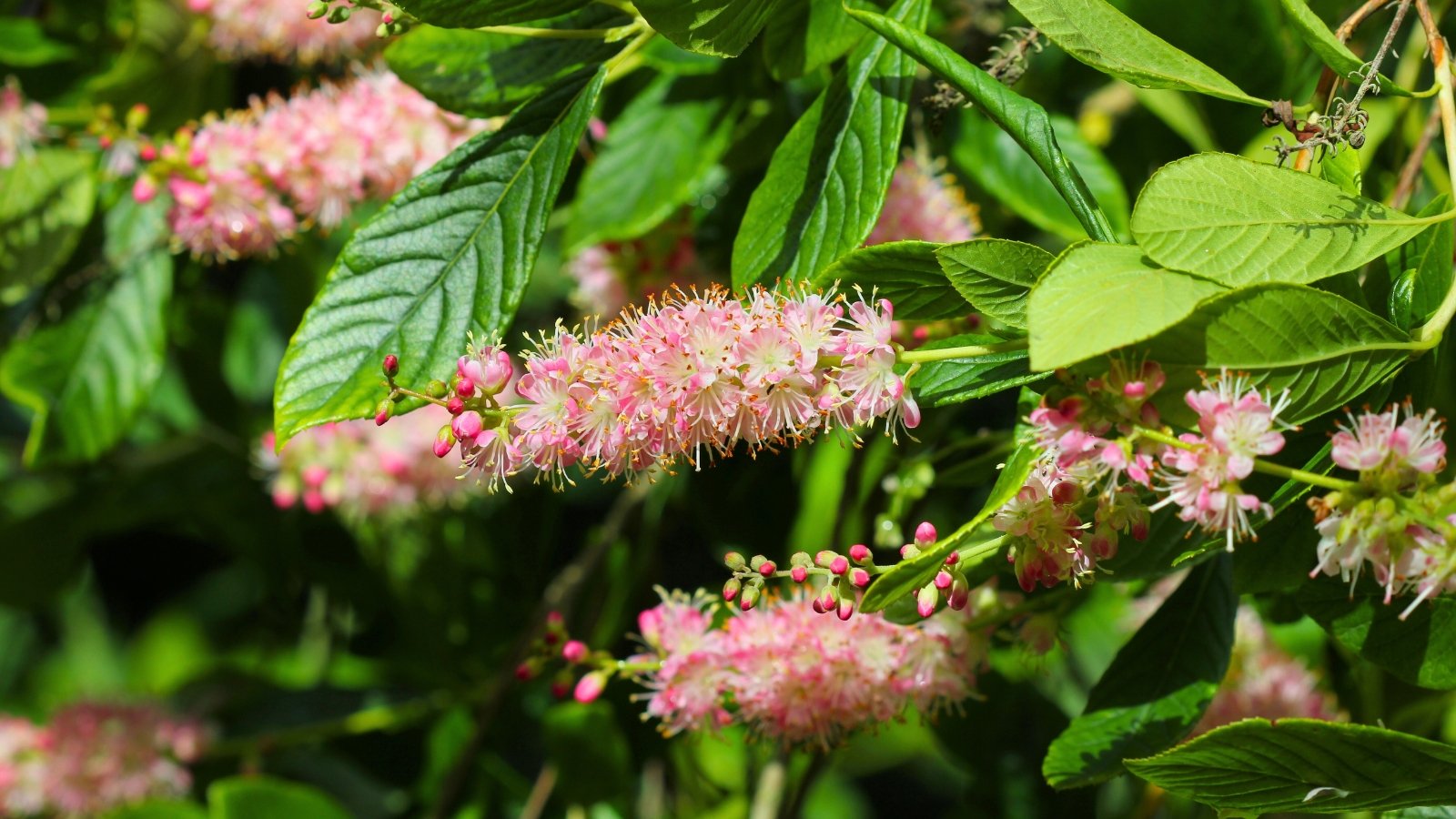 Blooms in midsummer when most shrubs go quiet.
Blooms in midsummer when most shrubs go quiet.Clethra is an unusual flowering shrub that deserves a place in the garden. The eastern North America native brims with all-season interest. Fragrant bloom clusters, showy seed pods, and fall color are among its merits. Bumblebees, hummingbirds, and other pollinators favor the high-quality nectar and pollen from pinky-white blooms with a spiced pepper scent.
Summersweet flowers during the peak of summer when other plants take a break. They bring color for weeks from July to August. The native shrub withstands various soil conditions once established, from wet stints to dry spells, though it needs moisture to thrive. Well-draining soils and afternoon shade protection from intense rays are optimal.
‘Ruby Spice’ offers fragrant late-season flowers in rosie pink. ‘Hummingbird’ in creamy white holds Royal Horticultural Society Award of Garden Merit status with a compact form and extended flowering.
Sweetshrub ‘Burgundy Spice’
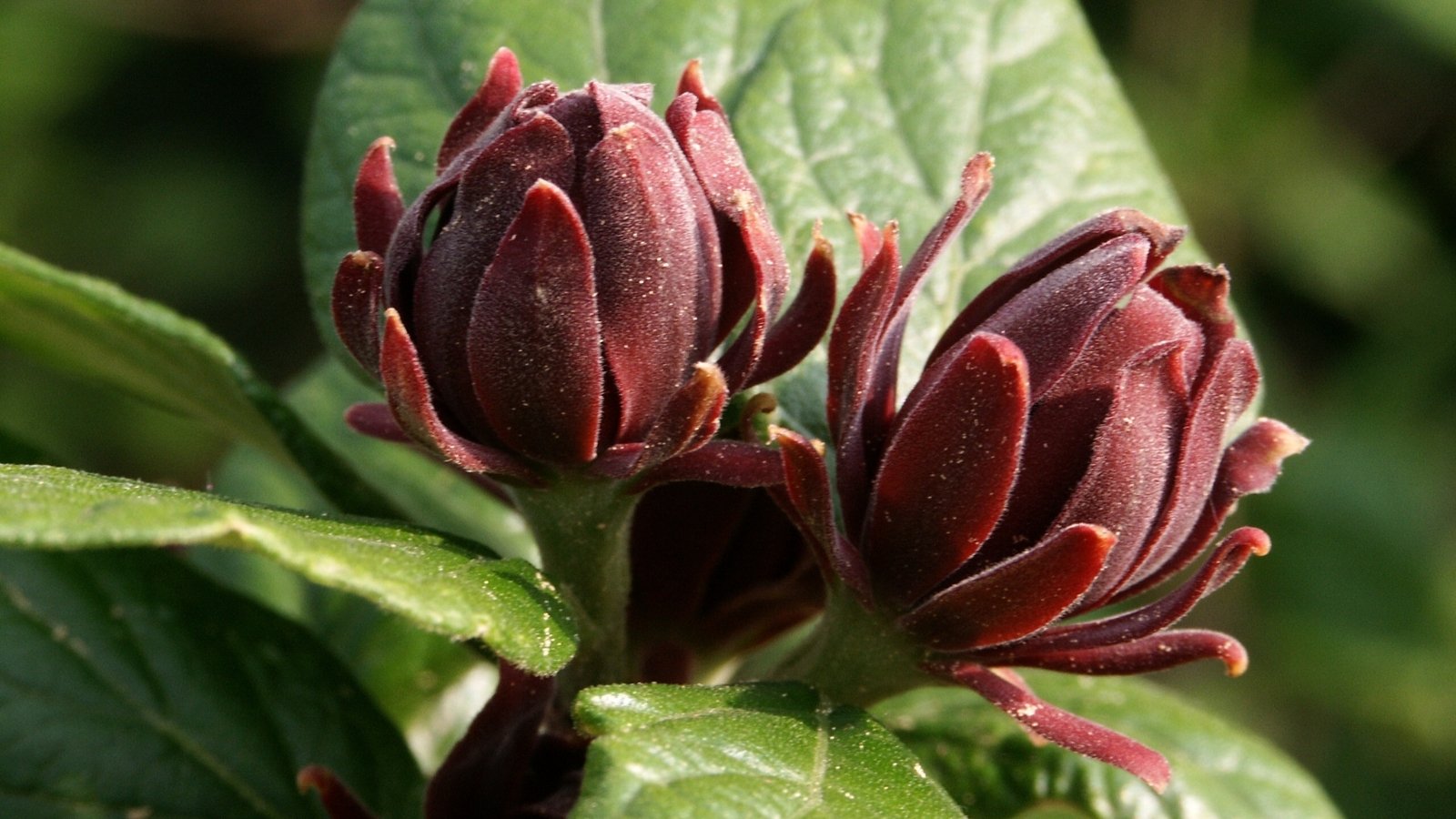 Upright and rounded, it stands out in natural borders.
Upright and rounded, it stands out in natural borders.Sweetshrub, or Carolina allspice, has fragrant, chocolate-red blooms that appear in May. The broad, handsome foliage is attractive even when the shrubs aren’t in flower, lustrous and deep green with gold fall color. The leaves and stems have a spicy, ginny fragrance.
Sweetshrub has presence as a specimen or grouped planting in woodland, mixed borders, pollinator gardens, and naturalistic settings. With enough room, situate these unusual shrubs near entrances, patios, and walkways to enjoy the fragrance.
Carolina allspice has a dense, upright, and rounded habit, nearly as wide as tall. ‘Burgundy Spice’ shows glossy, deep purple-red and olive green foliage throughout the growing season. In autumn, it turns shades of yellow and orange. The rich leaves are a striking twist on a native species.
Rose ‘Duchesse de Brabant’
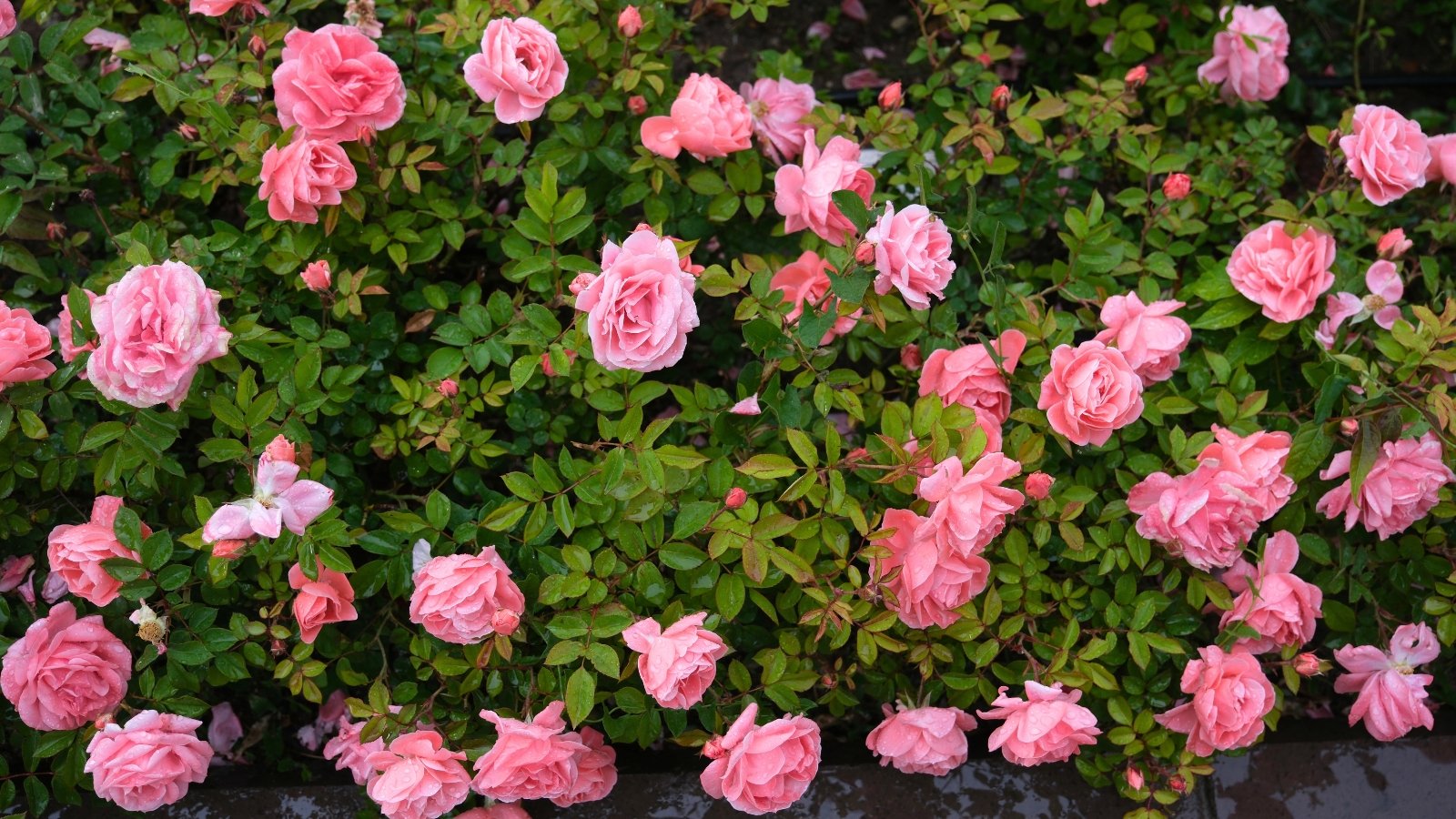 Blooms repeatedly with little care in warm climates.
Blooms repeatedly with little care in warm climates.As an alternative to landscape roses, old garden roses bring decadent blooms on a sturdy form. ‘Duchesse de Brabant’ holds indulgent, cupped blooms in a true rose pink. This classic beauty has double blooms and a characteristic old rose fragrance.
An antique variety from 1857, ‘Duchesse’ was reportedly a favorite of Theodore Roosevelt, often worn on his lapel.
‘Duchesse de Brabant’ flowers in flushes throughout spring, summer, and fall, and longer in warmer climates. The nodding blooms grace an upright, slightly spreading habit.
An Earth-KindⓇ rose, ‘Duchesse de Brabant’ is a strong performer across varying conditions with little supplemental maintenance. This unusual shrub benefits from good air circulation and adequate spacing, avoiding overcrowding with additional plantings.
Daphne ‘Aureomarginata’
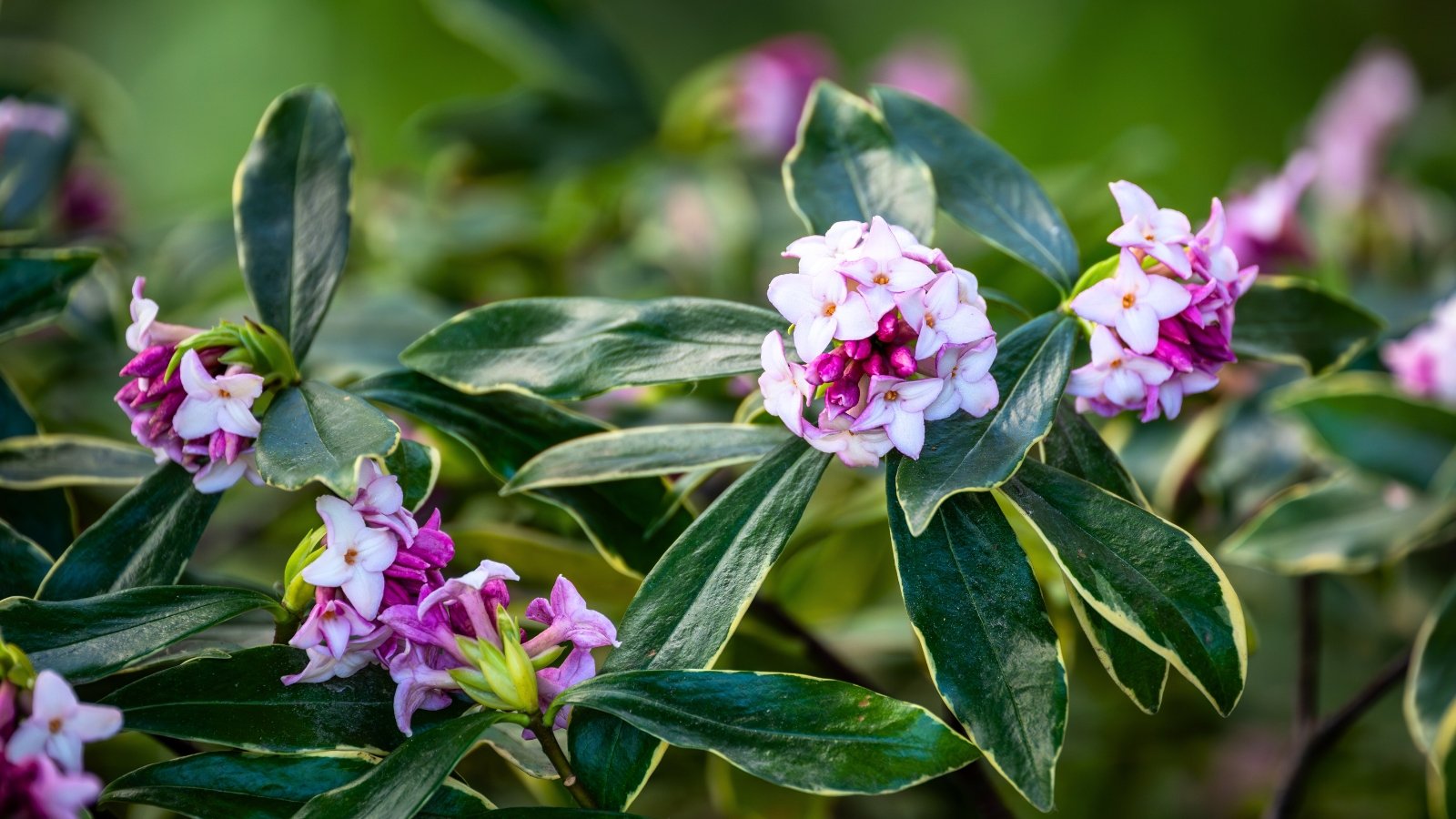 Slow to establish, but worth it for winter scent.
Slow to establish, but worth it for winter scent.Daphne odora is one of the most intensely sweet perfumed garden selections. Even more outstanding is that it flowers in winter, when we appreciate its fragrance in the cool air.
‘Aureomarginata’ has another striking feature in its long, mint green leaves with creamy yellow edges. The variegation lends a splash of brightness while maintaining its refined aesthetic.
Fragrant, deep purple-pink blossoms emerge in late winter, and blue fruits follow the blooms. Other unique variegated D. odora cultivars include ‘Moonlight Parfait’ and ‘Banana Split.’ Leaves have creamy yellow margins contrasting with deep green central ribbons.
Daphne prefers moist soils with good drainage, though these unusual shrubs are somewhat drought-tolerant and can dry slightly between waterings. Enjoy the fragrant shrub as a container specimen, in a woodland setting, and as a foundation plant. Roots are slow to establish and sensitive to transplant disturbance once planted.
Pieris ‘Interstella®’
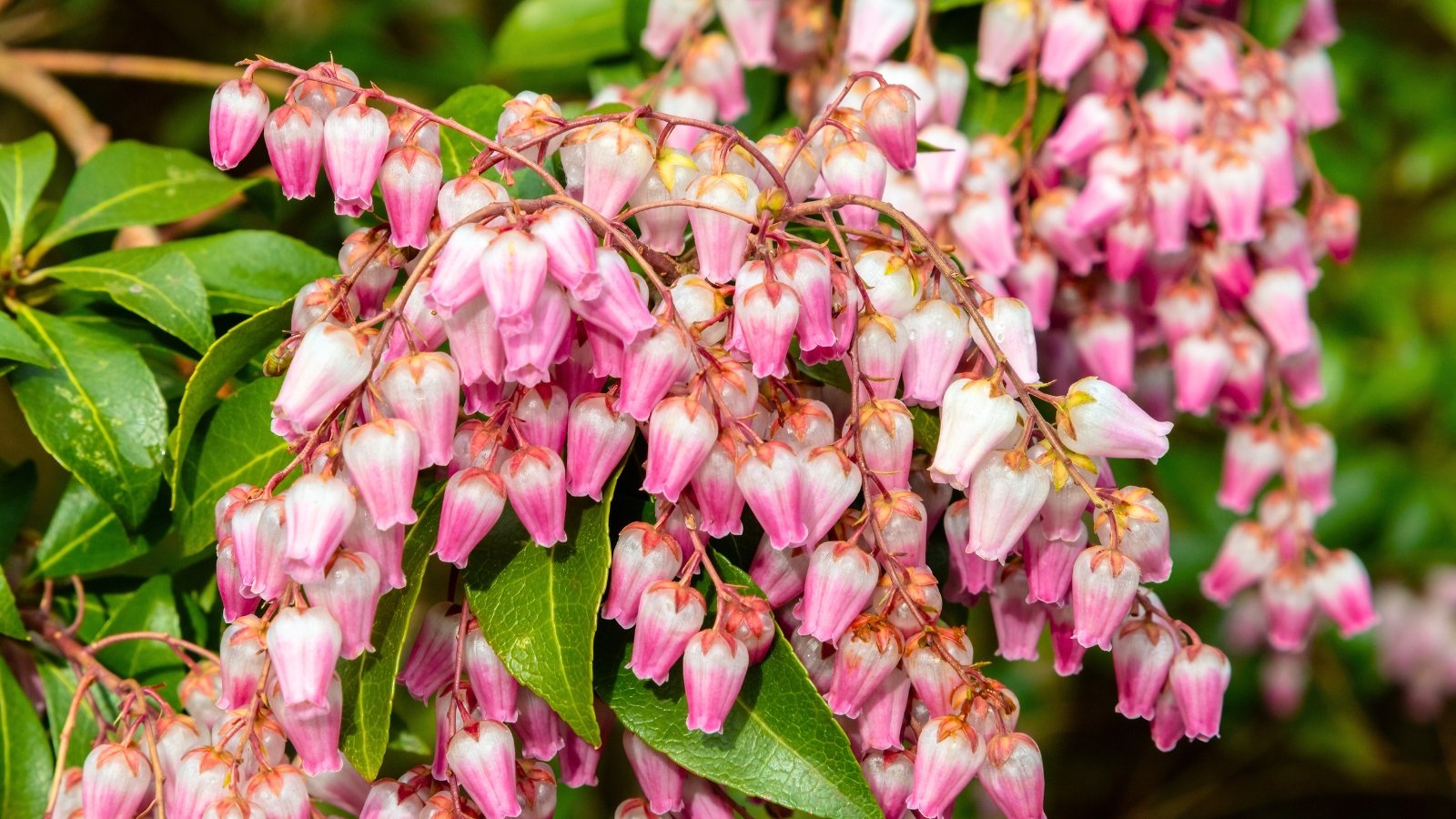 Flowers early and brightens shade with red new growth.
Flowers early and brightens shade with red new growth.Pieris has delicate bell flowers that suspend gracefully among leafy rosettes. The buds develop in late summer and hang like pearly beads throughout winter. Late in the season and into early spring, they open to the bells that resemble lily-of-the-valley (it’s also called lily-of-the-valley shrub).
New growth on pieris is bronze and red, with established leaves in deep, glossy green. ‘Interstella®’ mixes up the look with a profusion of ruby rose blossoms. They emerge in large clusters to drape over the dark foliage. New growth emerges red before transitioning to olive.
‘Interstella®’ is one of the earliest unusual shrubs to bloom and among the most shade-tolerant, flowering even in low light. It boasts a long bloom time of two months or more, followed by glowing fresh foliage.
Snowberry ‘Pink Symphony™’
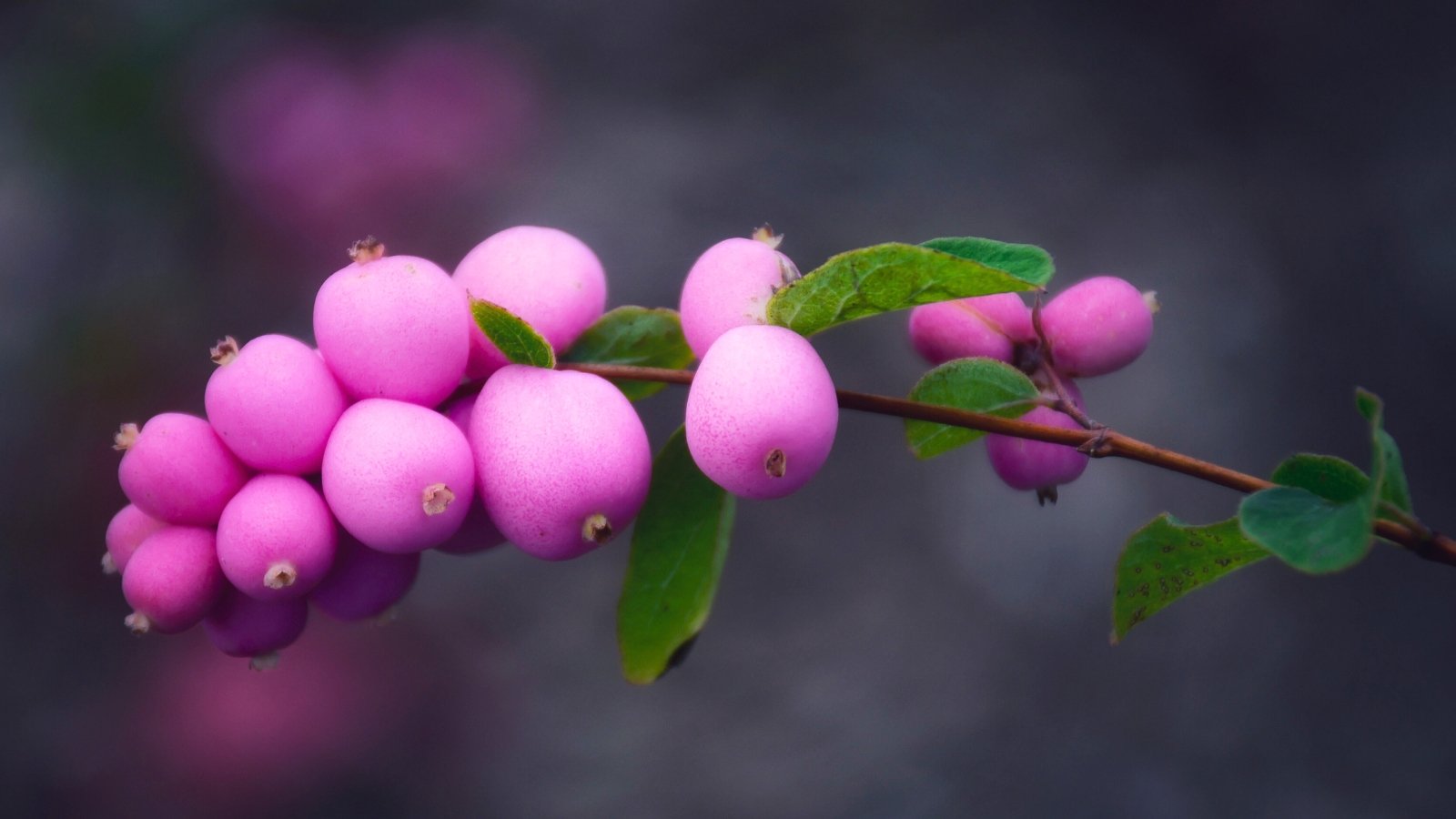 Tough native with bright pink berries for fall.
Tough native with bright pink berries for fall.Snowberry is a rugged North American native with clusters of tiny pink bell flowers in late summer. Post-bloom, pale green berries emerge and ripen to white.
‘Pink Symphony™’ brings a pretty twist with loads of berries in bright pink. Showy in the landscape and floral arrangements, ‘Pink Symphony™’ is an unusual shrub in the woodland border or against an evergreen backdrop.
Snowberry grows across soil conditions and is endemic to dry, rocky sites. Grow it as a specimen, along a slope, for erosion control, or as a naturalized hedge.
Sweetspire ‘Fizzy Mizzy®’
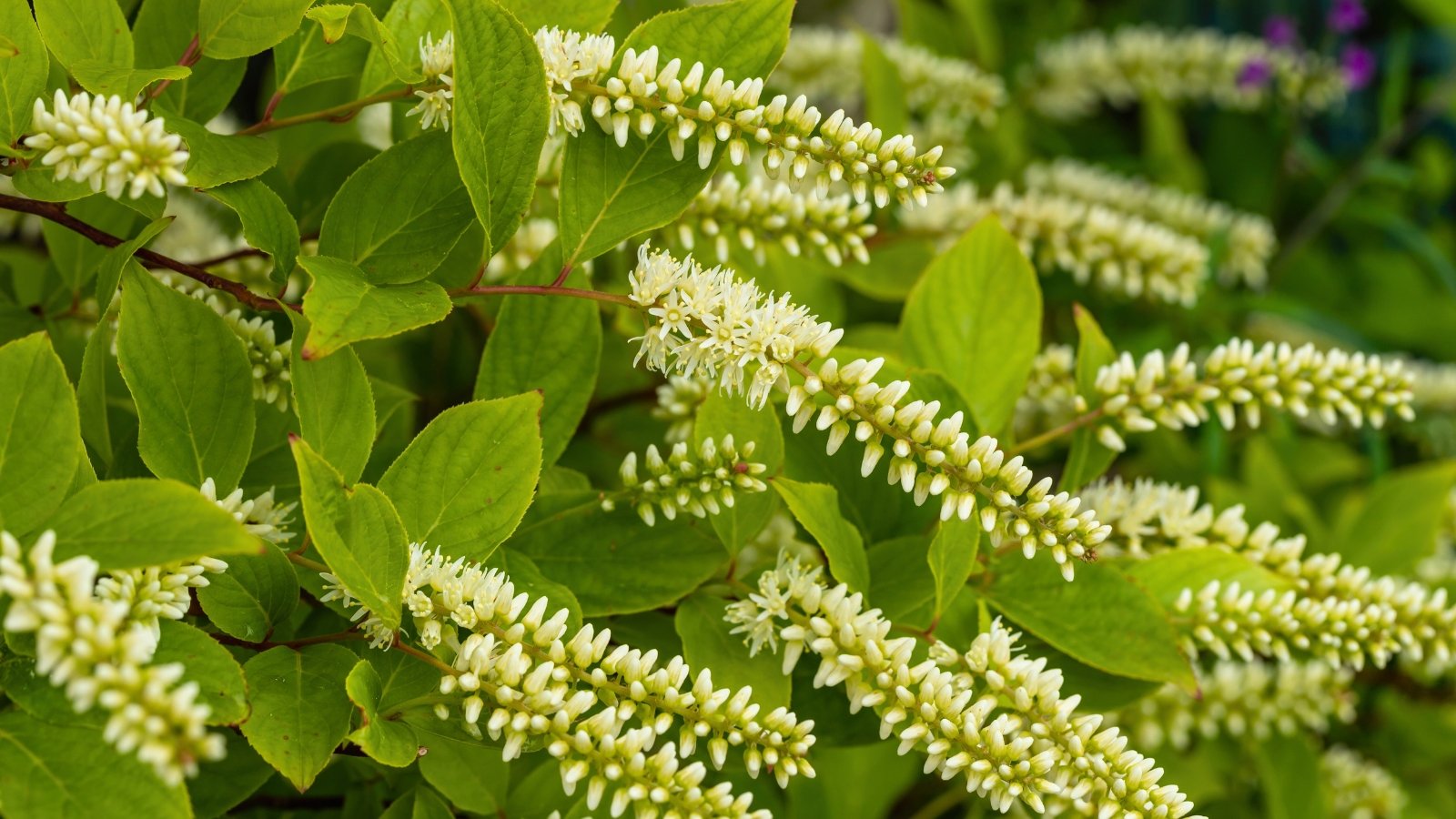 Compact shape and upright blooms light up wet sites.
Compact shape and upright blooms light up wet sites.Sweetspire is another North American native with cultivars bred for enhanced flowering and a tidy habit. It has long racemes of tiny white flowers with a light fragrance and weeks of blooms.
The deciduous shrub has an upright, rounded habit, slightly arching branches, and dark, willowy leaves. Foliage turns bright gold and burgundy in autumn, persisting on the branch into winter. The blooms attract pollinators, and the seeds that follow provide cool-season forage for songbirds.
Sweetspire performs across growing conditions, including wet and eroded sites. Itea virginica ‘SMNIVMM’ is a compact variety with distinct upright flower spikes. The white flares carry a delicate fragrance and serve as a beacon for pollinators. Foliage is handsome and thick on a tidy, dwarf form, and fall color is scarlet and burgundy.
Other distinct varieties include Award of Garden Merit recipient ‘Henry’s Garnet’ and the dwarf ‘Little Henry.’
Buttonbush ‘Sugar Shack®’
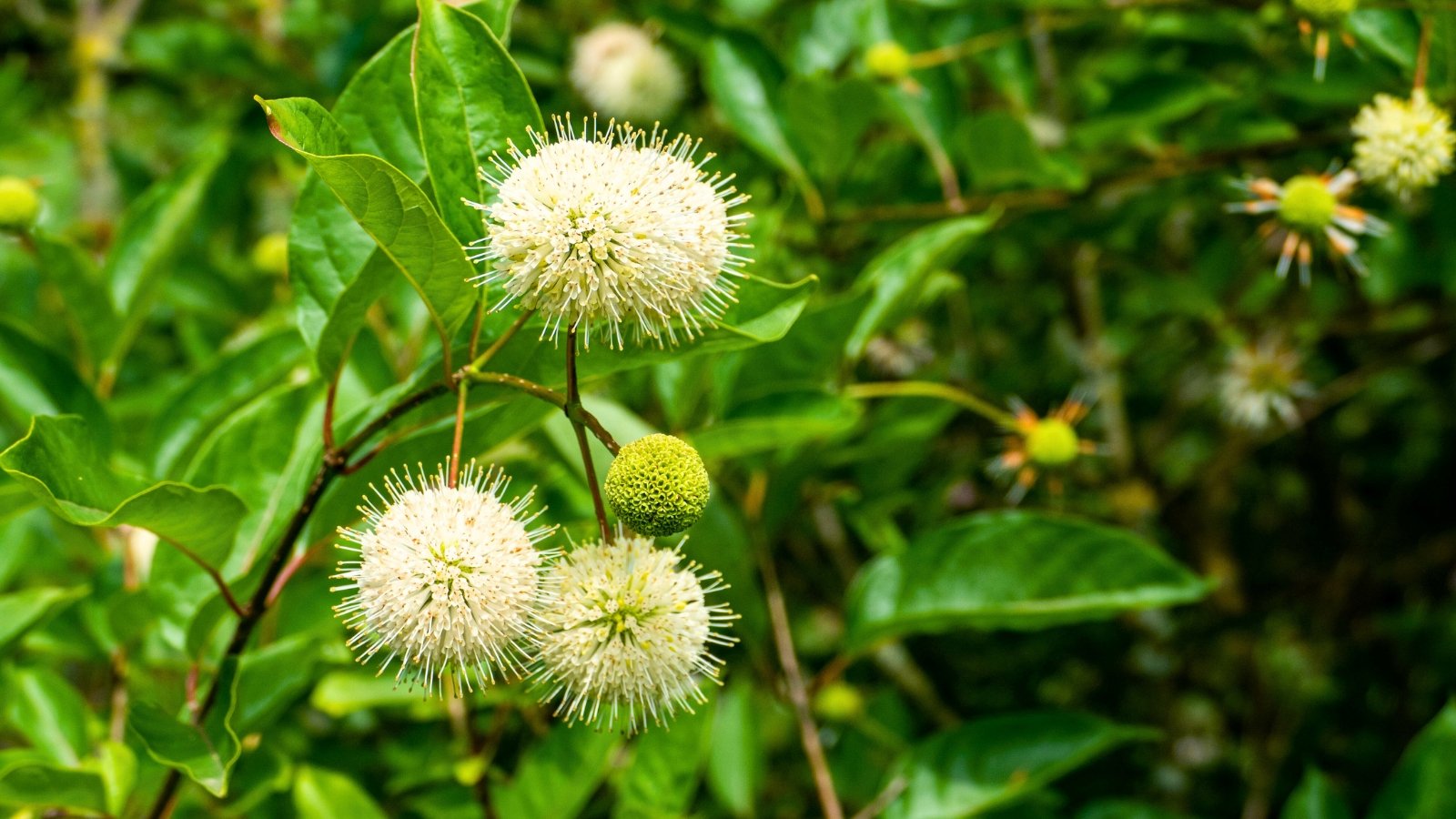 Pollinator magnet for wet spots and summer bloom.
Pollinator magnet for wet spots and summer bloom.Buttonbush is a loose, informal native with little globe blooms that draw bees with their nectar and pollen. The woody shrub or small tree has fragrant, spherical flowers from June through September. Flowers are tubular with long styles in a flared pincushion.
In 1735, the commercial introduction of buttonbush was to interest beekeepers in its pollinator-attracting attributes (they also go by the common name “honey-bells”). It grows across challenging situations, including wet areas and eroded sites.
‘Sugar Shack®’ is showy with creamy white flowers and bright red seedheads that follow. Glossy green leaves become tinged with burgundy and gold in the fall. It received the Pennsylvania Horticultural Society’s Gold Medal Award in 2024. ‘Sugar Shack®’ is more cold-hardy than the straight species, and the compact, unusual shrub is versatile across garden scales.
Distylium ‘Cinnamon Girl®’
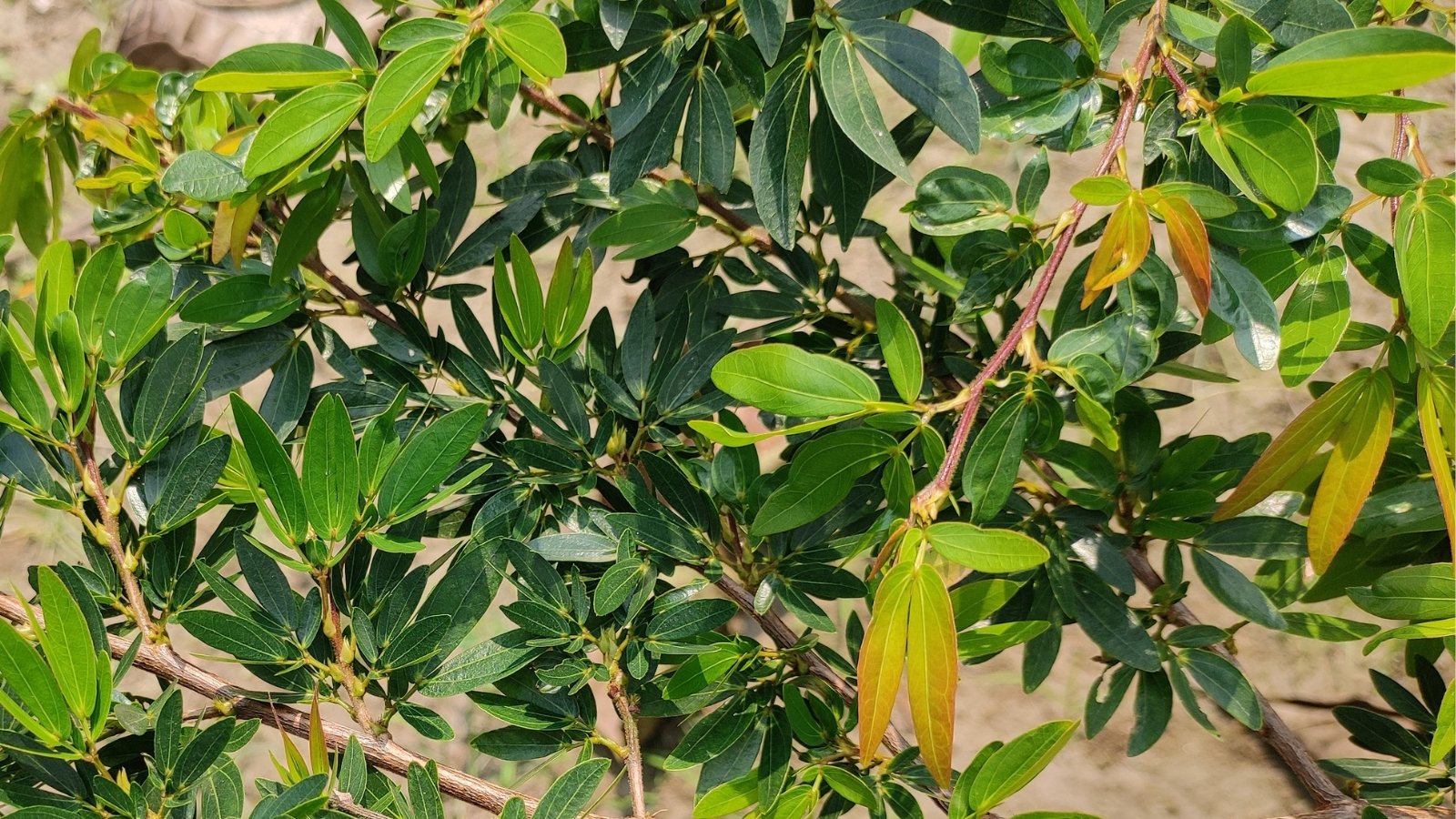 Thrives near coastlines where heat and salt can be tough.
Thrives near coastlines where heat and salt can be tough.Distylium is a unique shrub and a good alternative to standard evergreens. It’s becoming more well-known as a versatile evergreen for foundation and border plantings.
Depending on the variety, distylium has graceful scaffolding or upright branches and narrow, lustrous leaves in deep olive to blue-green. New growth emerges in copper, red, and purple.
‘Cinnamon Girl®’ is low-growing with fresh growth in purple-red on swirling branches. It’s among the more cold-tolerant cultivars, with hardiness to zone 6 (most are hardy to zone 7). ‘Coppertone™’ adds spice with coppery red new growth that matures to blue-green with purple tones in winter. ‘Linebacker™’ is also unique as an upright selection that reaches 8-10 feet tall.
The unusual architectural shrubs are carefree and do well in coastal and high-heat conditions. They seldom need pruning and perform reliably with few requirements.
Harry Lauder’s Walking Stick
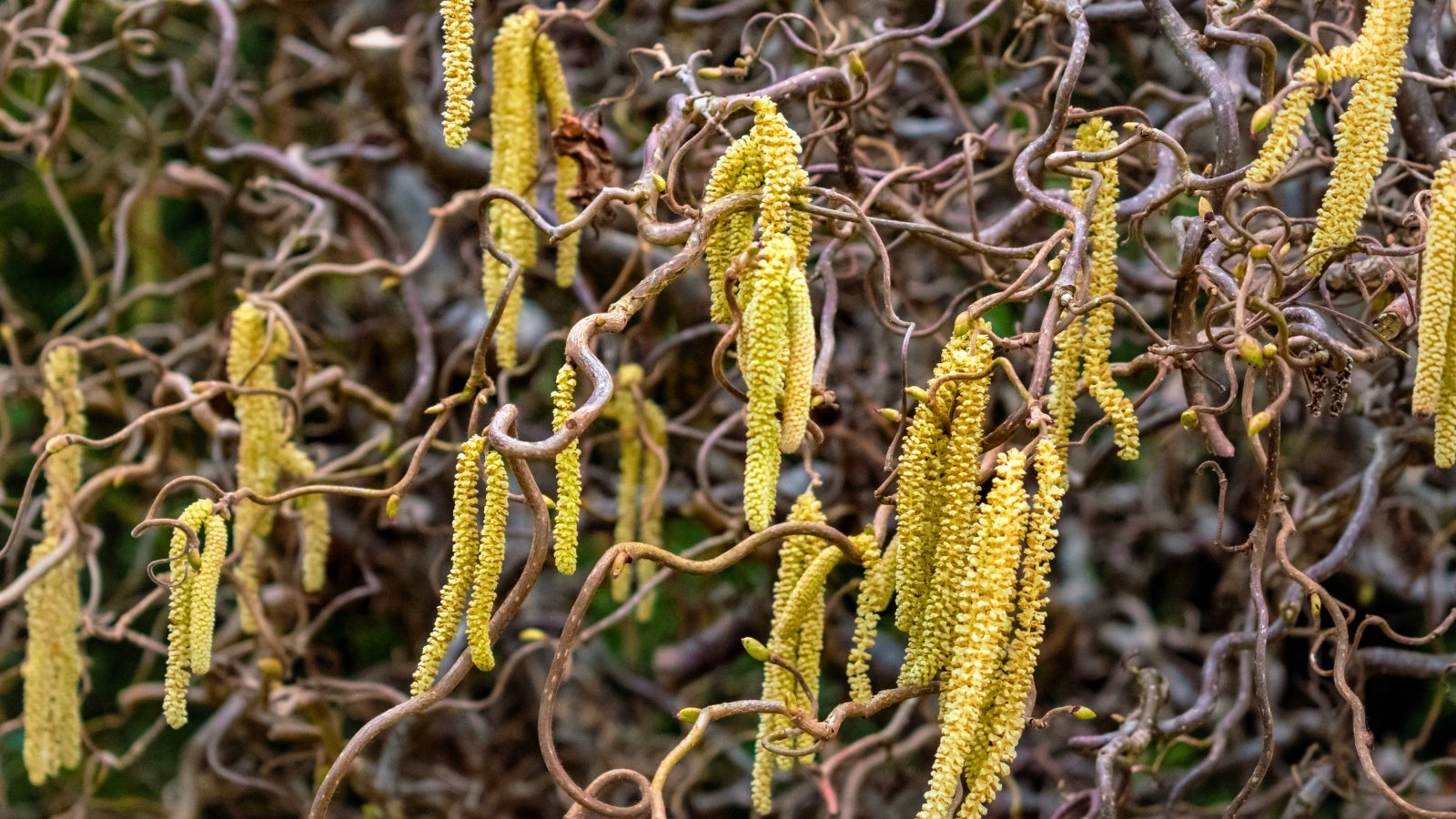 Twisted branches shine after leaves drop in fall.
Twisted branches shine after leaves drop in fall.Harry Lauder’s walking stick is the epitome of unusual shrubs with a gnarly, twisted, and curled form. In late winter, pendulous yellow catkins hang from its branches in a dramatic spectacle. The tree’s fruit is a nut that makes good wildlife forage.
Curly, willowy leaves emerge in spring, and the twisted branches are most visible when the leaves drop in fall. ‘Contorta’ performs best in rich, moist, well-drained soils, though it is drought-tolerant once established.
Feature the Award of Garden Merit recipient in a bed or container where its seasonal interest is on display.
Yellow Twig Dogwood
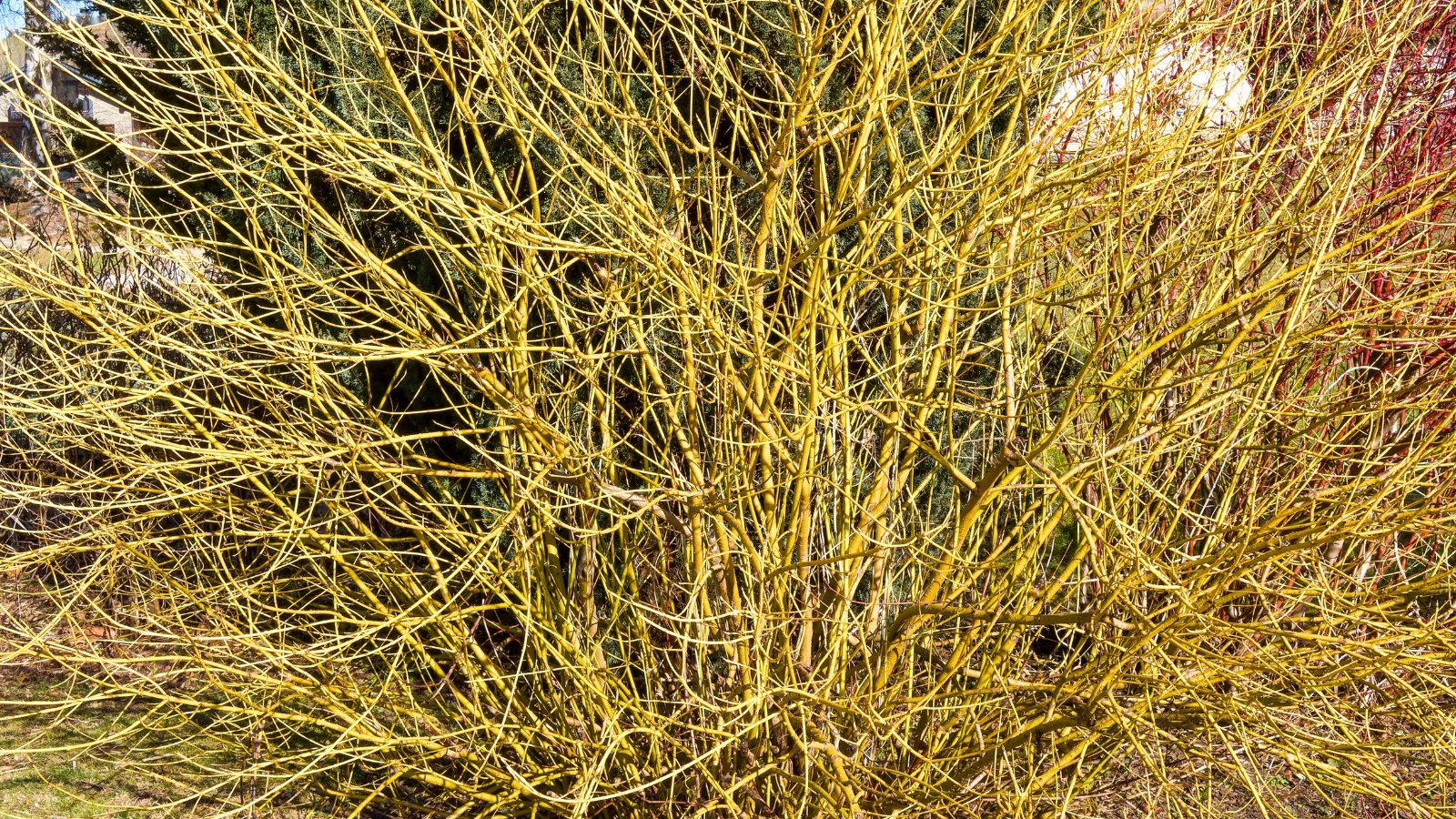 Gold stems brighten winter and handle tough conditions.
Gold stems brighten winter and handle tough conditions.We love red twig dogwoods with their unique upright stems that turn from burgundy to bright red in cold weather. Native to much of North America, the shrub shines in the winter landscape. Cultivars in yellow and coral with green, gold, or variegated foliage add to the interest.
Look to yellow twig dogwoods for a novel winter shade. ‘Flaviramea’ produces new stems in bright gold. Small white flowers show in spring, followed by white berries that supply forage for birds. The twiggy branches form thickets and do well in moist areas.
In a sweep or stand, they stand out amongst a snowy backdrop and are striking in naturalized compositions. The durable shrubs make a good privacy fence and tolerate urban pollution, deicing salts, and eroded sites.
Cestrum ‘Orange Zest’
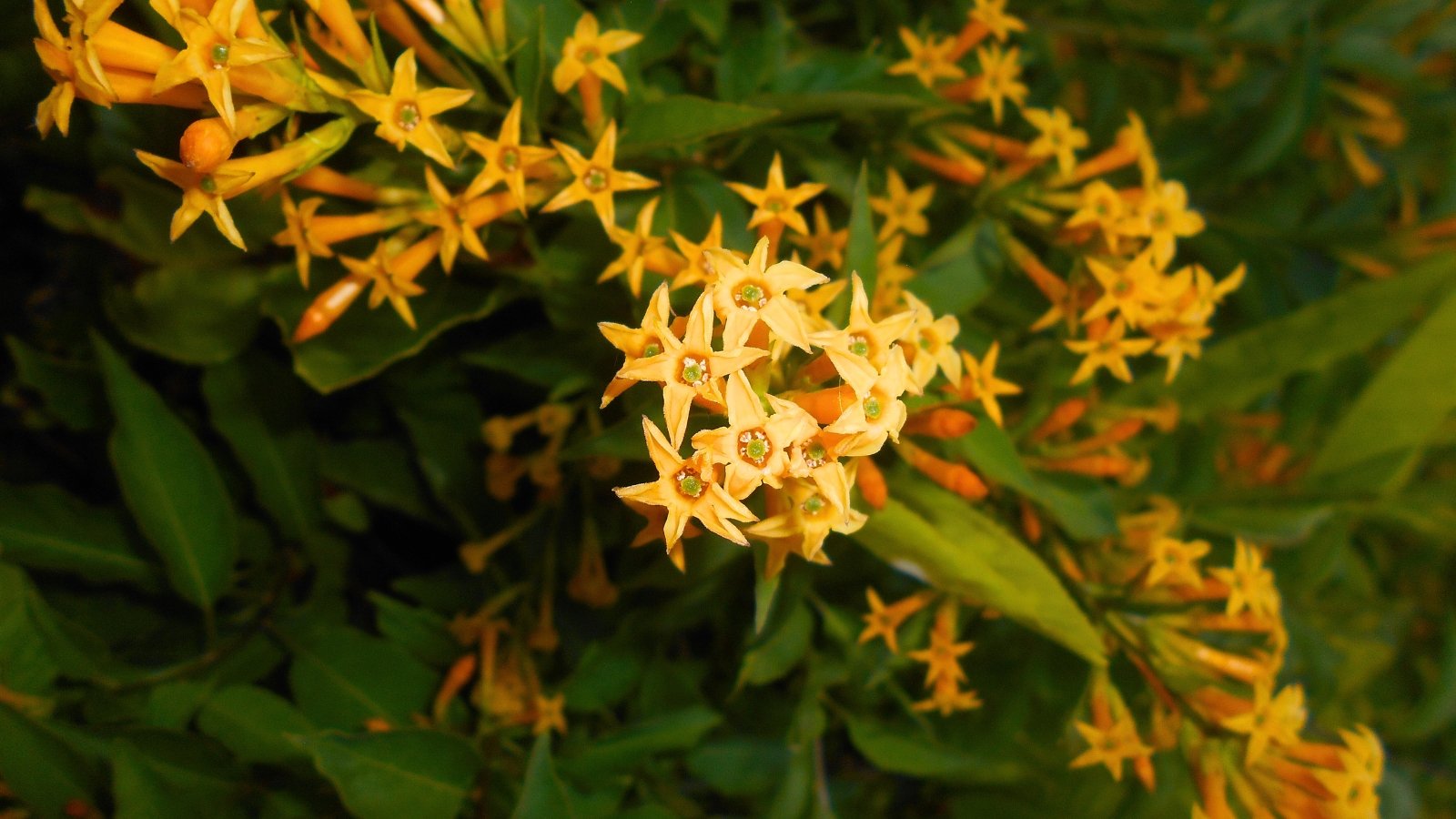 Heat-loving shrub with nonstop orange flowers.
Heat-loving shrub with nonstop orange flowers.Yellow and orange cestrum is a tropical shrub with a citrus perfume that intensifies in the evening to entice hummingbird moths and other pollinators. In spring and summer, clusters of trumpet flowers emerge vibrant and showy in gold and orange.
‘Orange Zest’ brings a burst of color with fragrant tubular flowers that are a magnet for hummingbirds. The tropical shrub is root hardy to zone 7 with extra mulch protection (the upper growth dies back to the ground in frosty climates).
Cestrum is a versatile shrub that withstands various soil conditions and periods of drought. Grow them as specimens or in large containers for the fragrant, colorful, tropical infusion.
Ninebark ‘Tiny Wine®’
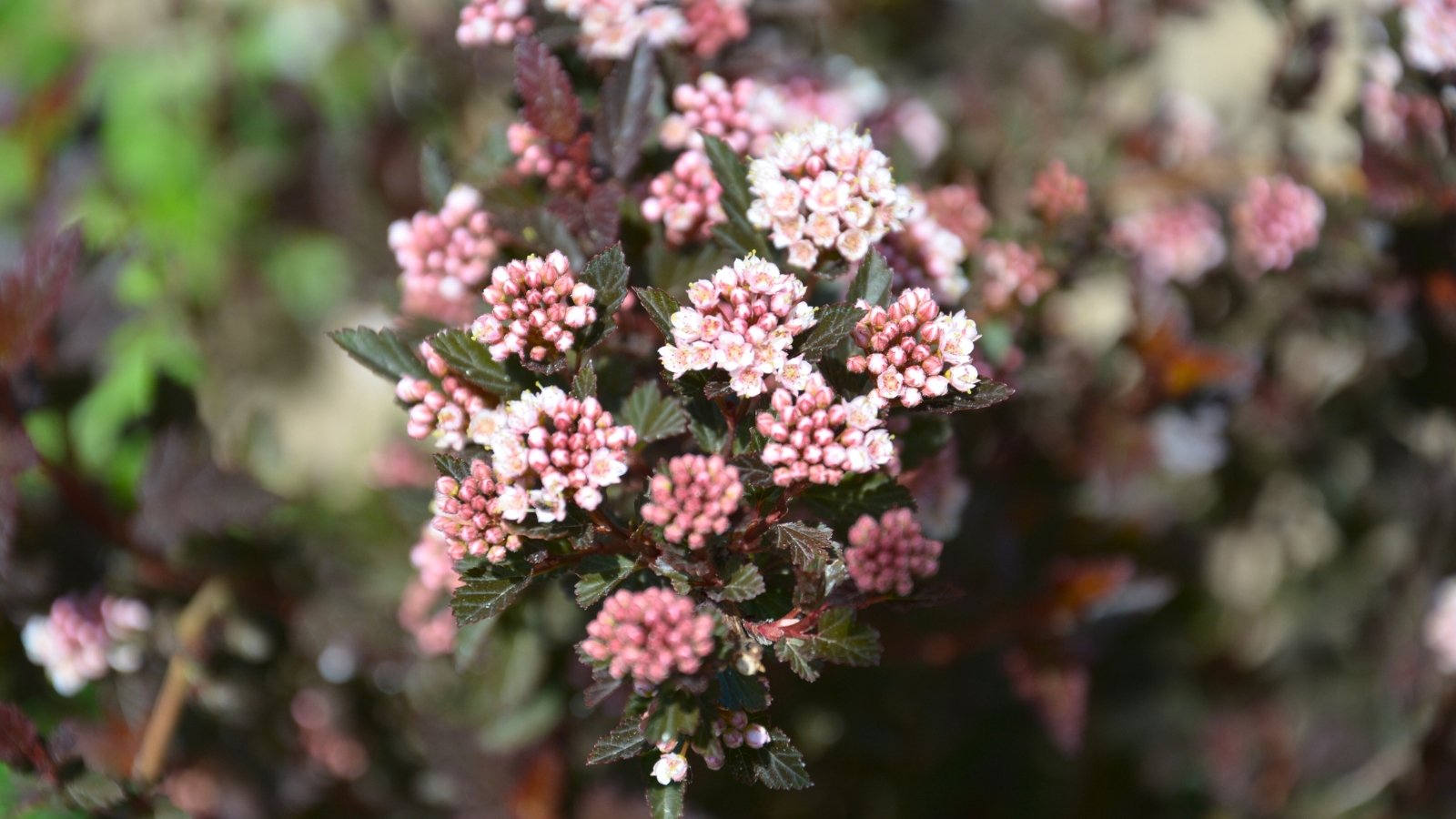 Small form with dark leaves and spring flower clusters.
Small form with dark leaves and spring flower clusters.Ninebark is a North American unusual shrub that’s easy care and exceptionally cold-hardy. Ninebark offers all-season interest across growing zones with cultivars in green, gold, and plum.
‘Tiny Wine®’ is a sweet cultivar smaller than the hefty species. Petite leaves are bronze and maroon against pinkish-white blooms. Bumblebee favorites, the bloom clusters line the stems for a full display in spring and early summer. The dark leaves extend the interest beyond the blooms for dramatic contrast.


 10 hours ago
8
10 hours ago
8
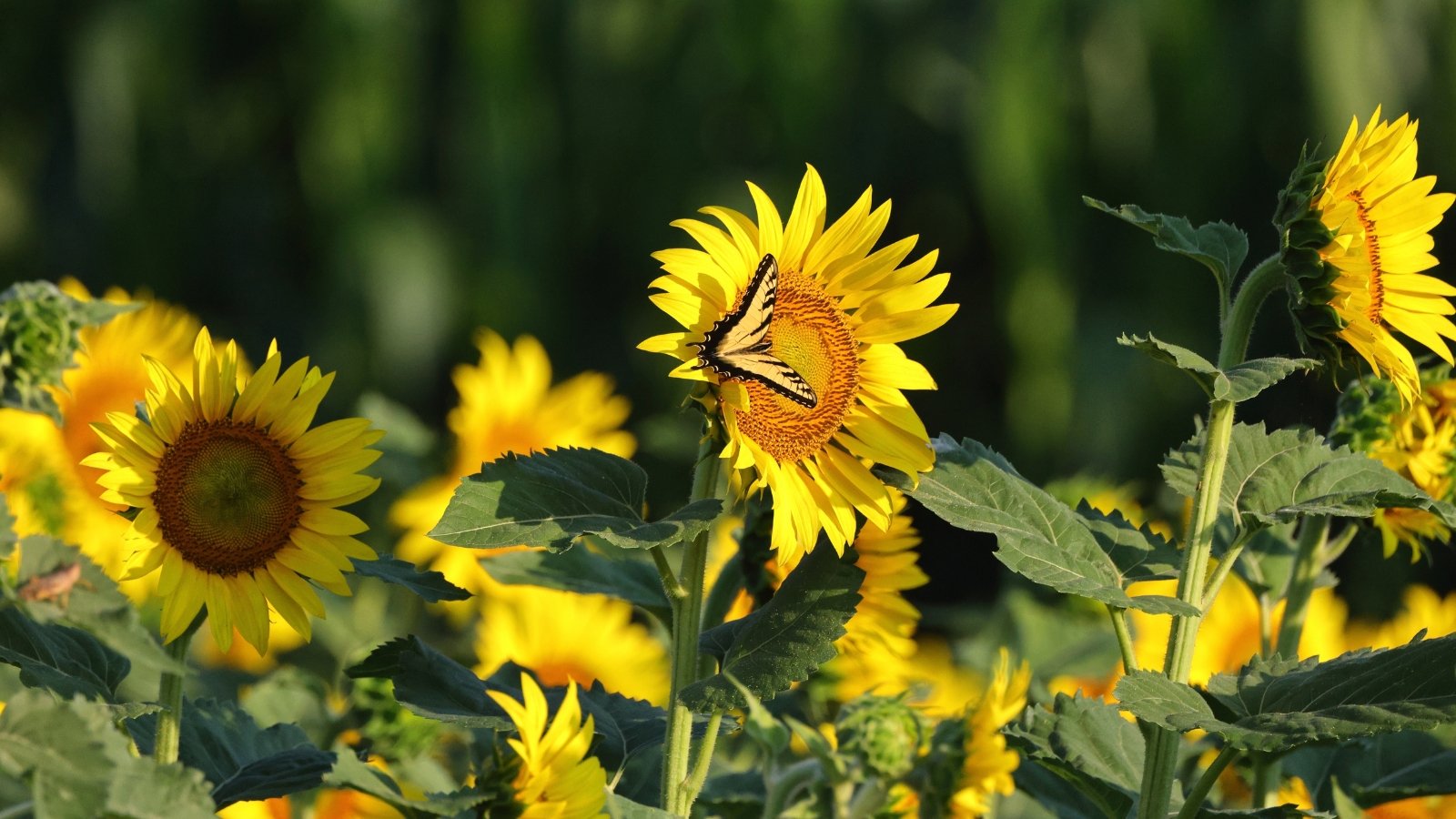

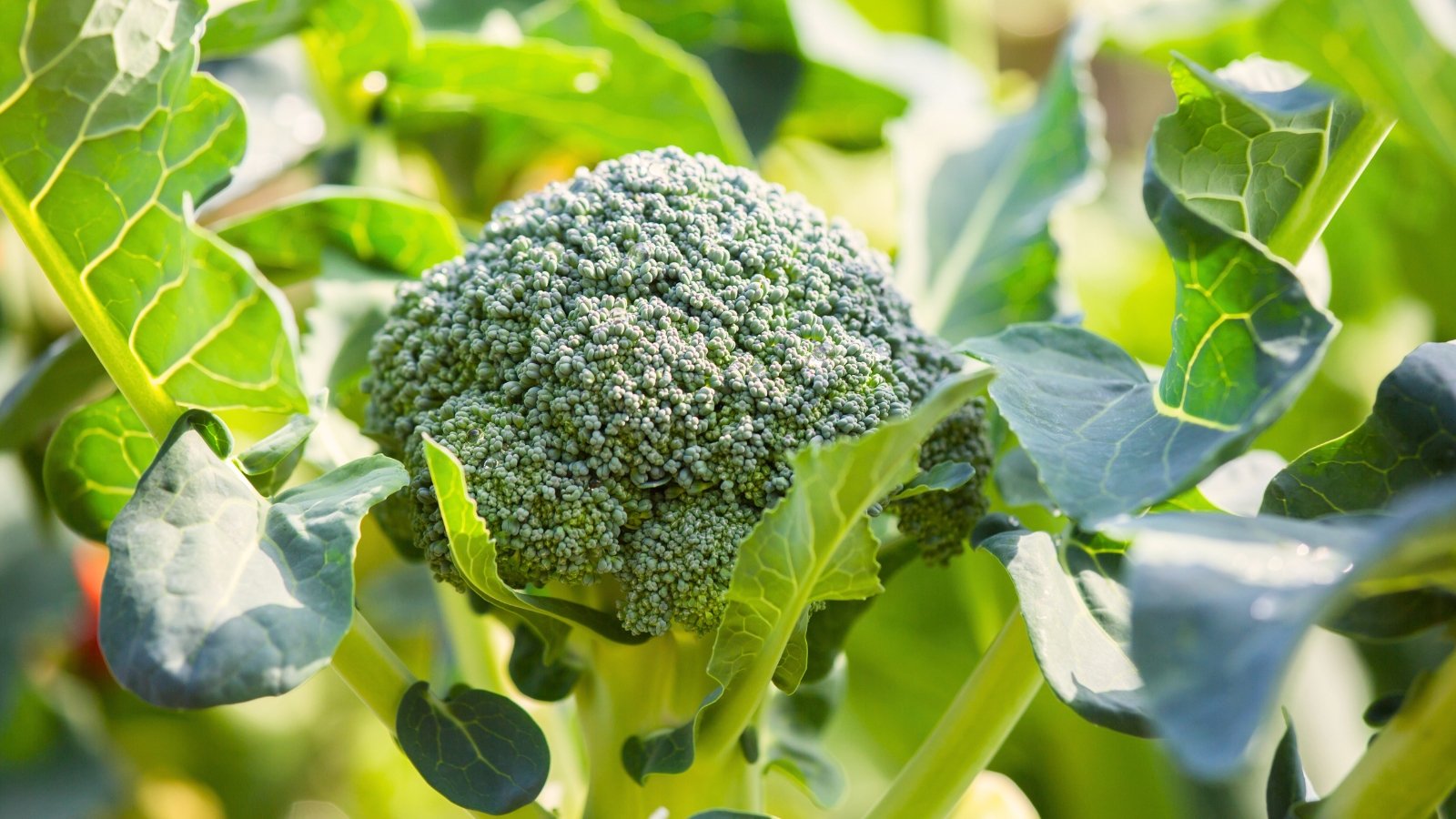

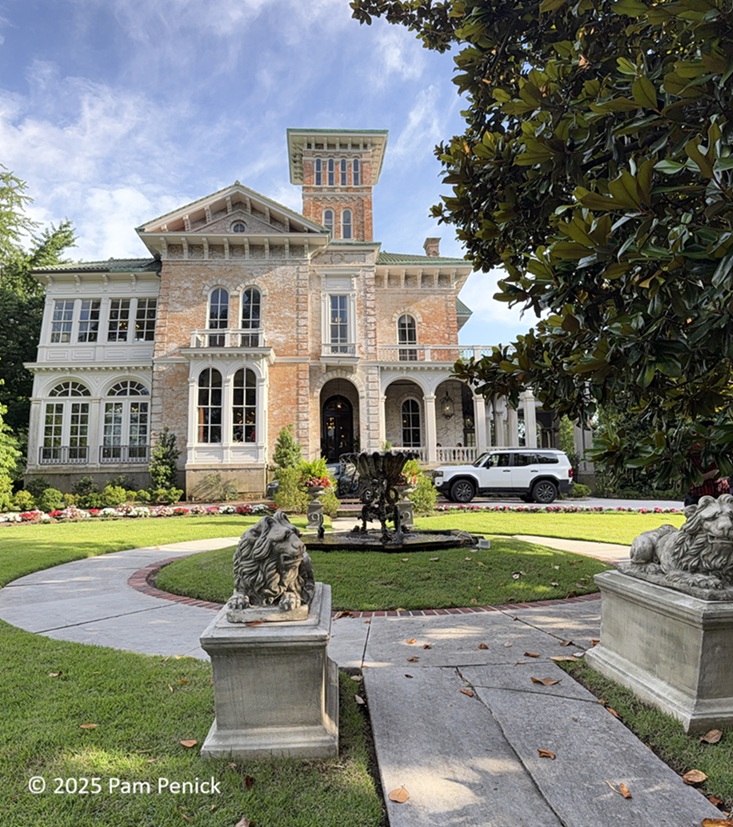
















 English (US) ·
English (US) ·  French (CA) ·
French (CA) ·